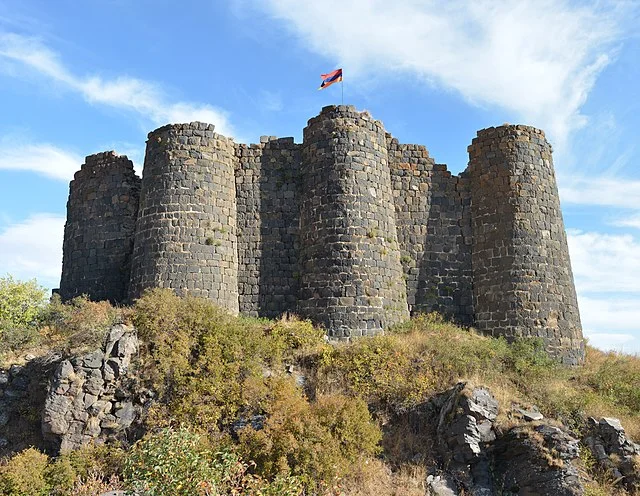The Cyclopean Fortress Amberd stands as one of Armenia’s most historically significant and strategically located medieval fortresses. Perched on the southern slopes of Mount Aragats, Amberd reveals the architectural prowess of ancient Armenians and reflects a long history of military and cultural significance.
Get your dose of History via Email
Historical Background of Amberd

The fortress’s origins date back to the 7th century AD, during Armenia’s early medieval period. Prince Kamsarakan of the noble Kamsarakan family initially constructed the fortress. The Kamsarakans built Amberd as a defensive stronghold, strategically positioned at an elevation of 7,000 feet (about 2,100 meters), providing sweeping views of the surrounding Ararat Plain.
In the 10th century AD, the fortress was expanded by the Pahlavuni family, another influential Armenian noble house. Under the leadership of Prince Vahram Pahlavuni, a prominent general and statesman, the fortress grew in both size and architectural complexity. Prince Vahram also ordered the construction of the Amberd Church in 1026 AD, a notable example of Armenian religious architecture.
Architecture and Cyclopean Walls
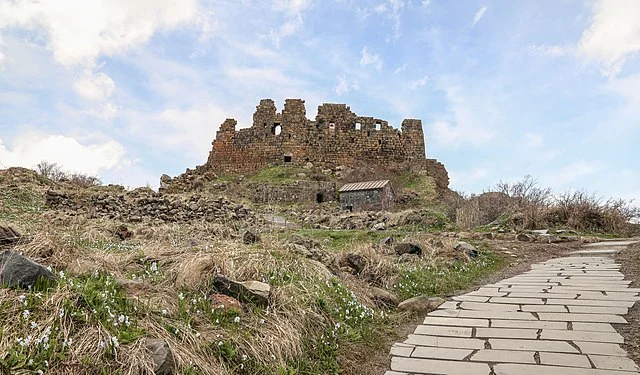
Amberd is known for its massive stone walls, which are the key features that define a “Cyclopean” fortress. The term Cyclopean refers to the large, irregularly shaped stones used in construction. These stones are tightly fitted together without mortar, showcasing impressive engineering skills. The walls measure over 10 feet in thickness, providing resilience against invasions.
The fortress consists of a three-story structure built into the natural contours of the mountain. Each level served different functions, from military defense to residential quarters. Amberd’s strategic location allowed its defenders to observe and control access points along the mountain, giving them the upper hand against invading forces.
Amberd Church and the Bathhouse
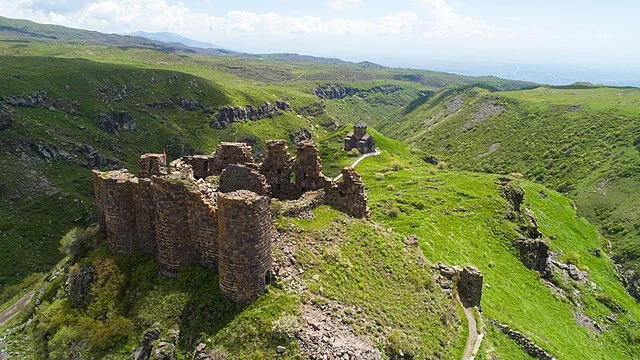
The Amberd Church, constructed from basalt stone, is a highlight of the fortress complex. Built in a cross-domed style, the church’s architectural design reflects both Armenian and Byzantine influences. Its simple yet elegant structure includes a single dome over the central area, with intricate stone carvings along the entryways and windows.
Alongside the church, a bathhouse from the 12th century AD demonstrates the influence of Eastern and Islamic architectural styles. This bathhouse includes an intricate heating system, with hollow clay pipes channeling hot air from the furnace beneath the floors and walls. This level of sophistication in the fortress highlights the advanced engineering knowledge of the time.
Strategic Importance and Decline
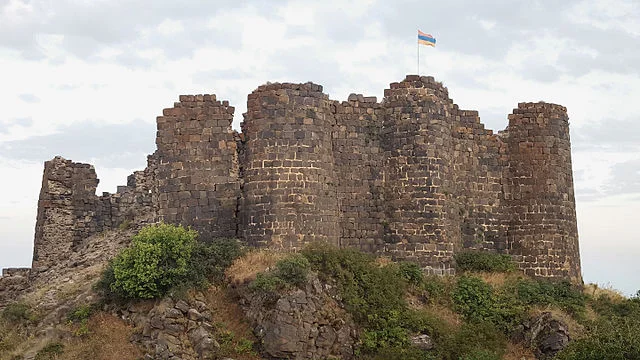
Amberd’s location played a crucial role in Armenia’s defense during the medieval period. Overlooking key routes, Amberd enabled Armenian rulers to monitor and control traffic between various parts of the region, including the major trade routes. The fortress became a central line of defense against Seljuk and Mongol invasions, as well as internal conflicts among Armenian princes.
However, Amberd could not withstand the Mongol invasions of the 13th century AD. The Mongols captured and destroyed the fortress in 1236 AD, marking the beginning of its decline. Following this destruction, Amberd was abandoned, with only sporadic use by local Armenians over the following centuries.
Archaeological Significance and Modern Restoration Efforts
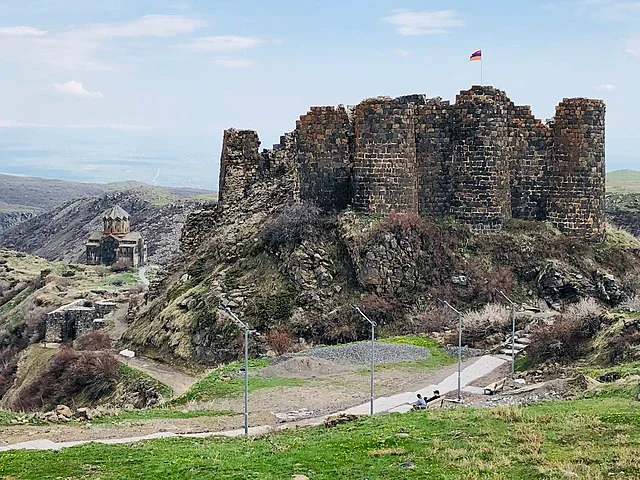
Archaeologists have long been drawn to Amberd due to its well-preserved structures and historical artifacts. Excavations at the site have unearthed pottery, metal tools, and weapons, providing insight into the daily life of Amberd’s inhabitants. Additionally, researchers have documented inscriptions on stones that offer historical records, such as dates of construction and names of patrons.
In the 20th century AD, restoration projects were initiated to preserve Amberd’s structures. These projects have aimed to reinforce the fortress walls, stabilize the church, and maintain pathways for visitors. Today, Amberd is a protected cultural heritage site in Armenia, allowing tourists and scholars to explore the architectural achievements and history of the fortress.
Conclusion
The Cyclopean Fortress Amberd remains a remarkable symbol of Armenia’s medieval strength, architectural innovation, and cultural identity. With its massive stone walls, strategic position, and historical significance, Amberd continues to captivate historians, archaeologists, and visitors alike. The fortress offers a unique glimpse into Armenia’s medieval past, reflecting both the resilience and ingenuity of its builders.
Source:

